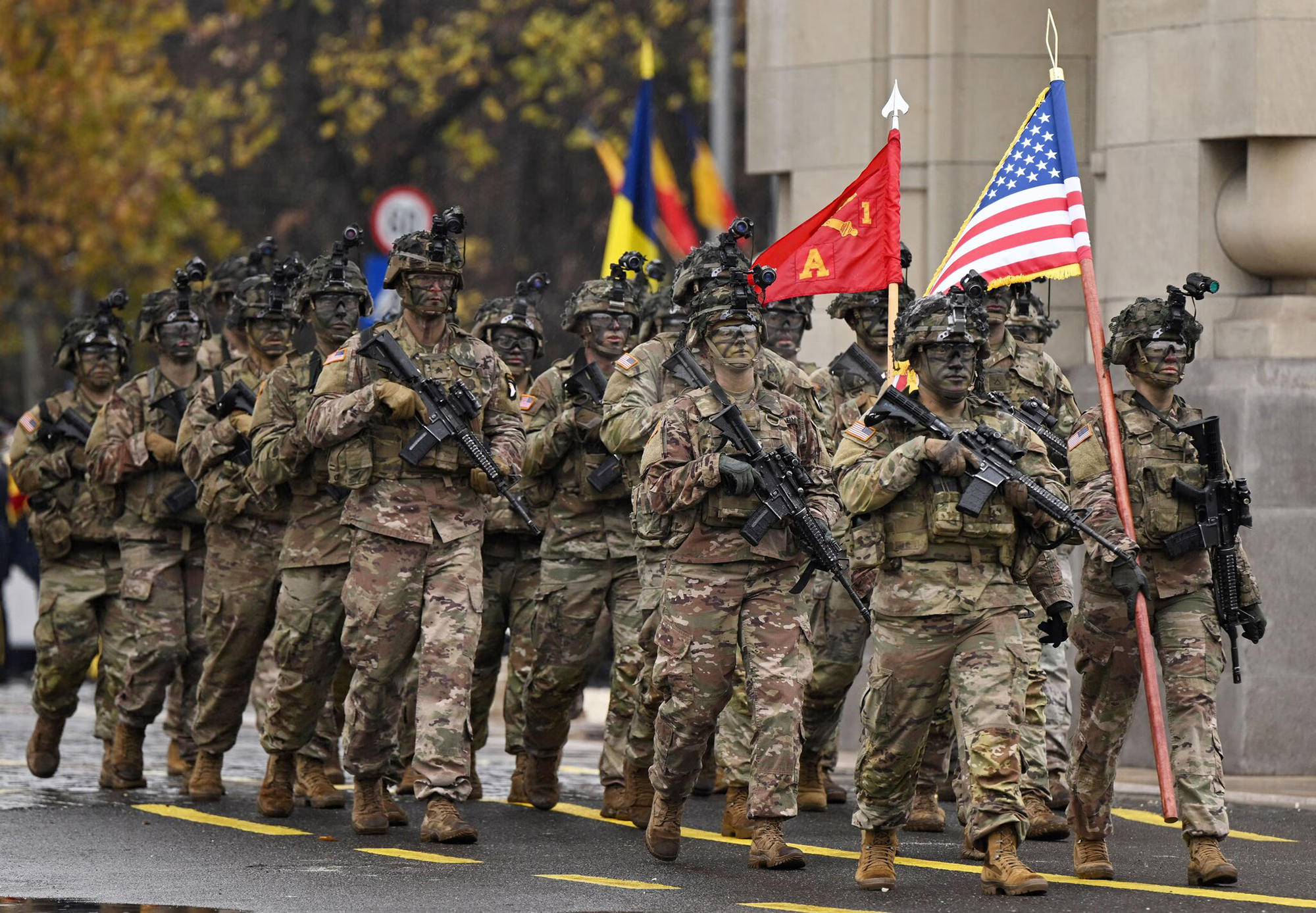The United States has notified its NATO allies that it will withdraw about 800 troops (or, according to some reports, 1,200) from Romania—a move that is part of President Donald Trump’s strategy to shift military resources toward the Asia-Pacific region. Initially, a reduction of U.S. forces in Poland was also discussed, but after Trump’s personal meeting with President Karol Nawrocki, Washington abandoned that plan, reaffirming its commitments to Warsaw.
The U.S. is withdrawing about 800 troops (or, by other accounts, 1,200) from Romania, official sources told G4Media.ro. According to them, the notification was made on Monday, October 27, at the NATO level. U.S. forces will also be leaving Bulgaria, Hungary, and Slovakia. Defense Minister Ioanuț Moșteanu confirmed the information, emphasizing that “the number of U.S. troops in Deveselu and Câmpia Turzii remains unchanged. The only change concerns the Mihail Kogălniceanu base, where the rotational brigade that used to come and go will no longer be stationed. It’s currently not there—it departed for exercises about a month ago. The brigade had roughly 1,200–1,500 personnel. Only the aviation combat group and other units remain at the base,” Moșteanu said.
The withdrawn troops are part of a contingent currently stationed in Germany that was scheduled to deploy to Romania as part of NATO’s eastern flank rotation. U.S. forces in the country operate from the Mihail Kogălniceanu, Deveselu, and Câmpia Turzii bases. It is not yet clear from which specific bases the 800 troops will be withdrawn.
The measure is executive in nature, meaning it takes effect immediately, though the U.S. Congress could theoretically amend it. The White House decision is tied to President Donald Trump’s strategy of concentrating military resources in the Asia-Pacific region. Around one thousand American troops with military equipment, including aircraft and drones, will remain in Romania.
According to G4Media sources, the troop withdrawal is unrelated to the suspension of elections—evidenced by the fact that the reduction also affects Hungary, a close ally of Trump led by Viktor Orbán.
Romania’s Ministry of Defense issued an official statement: “Romania and its allies have been informed of the United States’ decision to adjust the number of American troops in Europe.”
The document states that “the Ministry of Defense received notice of the review of some U.S. forces deployed on NATO’s eastern flank as part of a reassessment of America’s global military posture. Among the units whose rotations are being terminated are those assigned to Romania and stationed at the Mihail Kogălniceanu base.”
The ministry noted that the decision had been expected, as Bucharest remains in constant contact with its U.S. strategic partner. The redistribution of forces reflects the new priorities of the Trump administration, outlined as early as February. It also became possible because NATO has strengthened its presence on the eastern flank, allowing the United States to adjust its own military configuration in the region.
“The U.S. is ending the rotation of a brigade whose units had been stationed across several NATO countries. Around one thousand American troops will remain in Romania, continuing to provide deterrence against potential threats and serving as a symbol of the United States’ commitment to regional security,” the ministry’s statement said.
The decision by President Donald Trump’s administration has caused concern along NATO’s eastern flank and signaled a shift in Washington’s global defense priorities.
According to three U.S. and European officials familiar with the matter, the administration informed its allies of the decision earlier this week, with an official announcement expected in the coming days. The sources, who spoke on condition of anonymity, specified that the move involves no more than a single battalion and insisted it would have “no significant impact on U.S. operations in the region.”
The decision comes amid a rise in Russian violations of NATO’s airspace, including over Romania, and coincides with the U.S. president’s efforts to “double down” on securing a cease-fire agreement in Ukraine.
Initially, reductions were discussed for both Romania and Poland, but ultimately they will affect only Romania, sources told the publication. This choice, they emphasized, reflects a complex geopolitical calculation.
Earlier, Trump met with Poland’s new president, Karol Nawrocki, and pledged that American forces in the country would not be reduced. According to participants in the meeting, he stressed: “We never thought about pulling troops out. We stand with Poland to the end.” Poland currently hosts up to 10,000 U.S. troops, including the headquarters of V Corps.
The reduction is also linked to the Pentagon’s policy of concentrating resources in the Western Hemisphere and strengthening its posture in the Pacific in the face of strategic competition with China. This aligns with a broader reassessment of the U.S. military footprint, in which European Command’s missions are being reviewed to reallocate forces toward priority regions—the Western Hemisphere and the Indo-Pacific.
